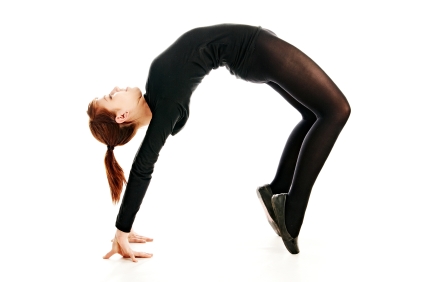When you speak to your child's physical therapist, you might hear them say, "His shoulder range of motion is doing better after rotator cuff surgery but still needs to improve." Perhaps the reference is to a swollen knee, sprained ankle, or jammed finger, but, in the end, the therapist keeps talking about range of motion, and the inevitable question parents ask is, first, what is range of motion, and, second, why is restoring range of motion so important in the injury rehabilitation process?
What is range of motion?
Range of motion is defined as the normal degrees of motion for a particular joint. The question, in practical terms, is does the joint move the way it was designed to?
A joint like the shoulder is complex, and moves in every movement plane; the elbow is more simple: it either bends and straightens the way it is supposed to or it doesn't.
There are two kinds of range of motion for every joint: passive and active. Passive range of motion is how far a joint moves without muscular force. The value is generally greater than active range of motion, which measures how much a joint can move without bending it using a strap, straightening with the hands, pushing against the wall, etc.
Factors limiting range of motion
Range of motion can be limited by a number of things, including:
- Swelling
- Scar tissue
- Weak muscles
- Tight tendons/ligaments
- Torn tissue (causes block in joint)

- Bony abnormality
Importance of restoring range of motion
Restoring range of motion is critical not only in the therapy process and to return to play, but to minimizing the risk for future injury. If a joint is unable to move properly, secondary to tightness, swelling, or weakness in the muscles, it is exposed to increased risk of re-injury.
For example, your child may have a knee injury and be lacking five degrees of extension, meaning the knee cannot fully straighten. You might think five degrees is a relatively small number, but to a therapist and doctor it is a really big deal. A knee that does not fully straighten exposes certain parts inside the knee structure to wearing out faster and creates a relatively short leg, setting the athlete up for future injuries, not just to the knee but the hip, ankle, and back as well. In addition, that decreased range of motion will shorten an athlete's stride while running, create imbalance from side to side, and lead to weakness in the quadriceps muscles, negatively impacting performance.
Advice to parents
Improving range of motion, particularly following surgery or with a very swollen joint, is a painful process. Often, athletes will refrain from "pushing through the pain" with this particular limitation. It is the one time they need to push, and push hard! If your child's therapist is emphasizing range of motion as part of treatment, it is important to be proactive and supportive of that advice. Athletes are often tempted to skip the parts of their home exercise program that hurt the most. Don't let this happen!
While it is never a good idea for a pitcher to push through the pain of a sore rotator cuff, or for a track or cross-country athlete to continue to run with plantar fascitis, joints that are restricted from full range of motion must be addressed early in physical therapy before returning to sports.
The bottom line: fully functioning joints equal shorter rehab, less co-pays, and happier athletes, better able to perform at their best and with fewer injury problems down the road!
Third in a series
Keith Cronin is a physical therapist in the St. Louis area and was recently selected as a Recommended Expert by the American Coaching Academy. Have questions? info@MomsTeam.com








